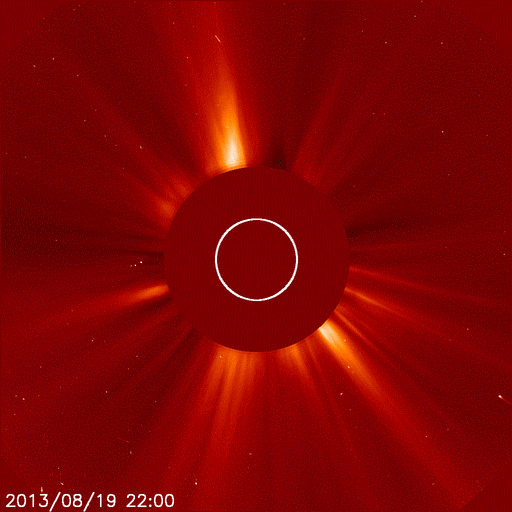
In the early hours of Tuesday, August 20, a comet estimated to be only a few tens of meters across made the kamikaze dive and did not seem to survive it's fiery encounter. (See also Comet Seen Vaporizing in Sun's Atmosphere - A First)
If you look at the lower right corner of the last few frames in the above movie, which was created from individual snapshots from SOHO, you can watch the icy interloper quickly vaporize while producing a thin-long trail behind it as it plunges into the sun.
As an unexpected bonus, in the final moments before the comet hits the sun, a cloud of charged particles known as a coronal mass ejection (CME) is flung off the solar surface. Astronomers don't think the the cloud and comet collided since the CME originated on the far-side of the sun and the comet was in the foreground. Also there is no evidence to suggest the two cosmic events are connected.
Comment: This is like a prosecutor in a court of law saying: "The knife went into the victim's chest, your honor, but we have no reason to suspect that it was involved in the murder..."
Seriously, National Geographic?! Isn't it your job to inform people, not blur what is in front of their eyes?
Of course the two events are connected. The sun nearly always flares when comets pass by or into it because they are electrically discharging it.
According to the Spaceweather.com website, this comet belongs to family of sun-divers known as 'Kreutz sungrazers', which astronomers believe are tiny fragments of a much larger comet that broke up centuries ago.
Well over 1,500 of these suicidal sungrazers have been reported in just the last 15 years, with most just disintegrating from the heat of the sun.
Nearly two years ago, comet Lovejoy managed to survive it's encounter with the sun as it skimmed through the outer solar atmosphere.



"Also there is no evidence to suggest the two cosmic events are connected."
Good of them to emphasize this point.